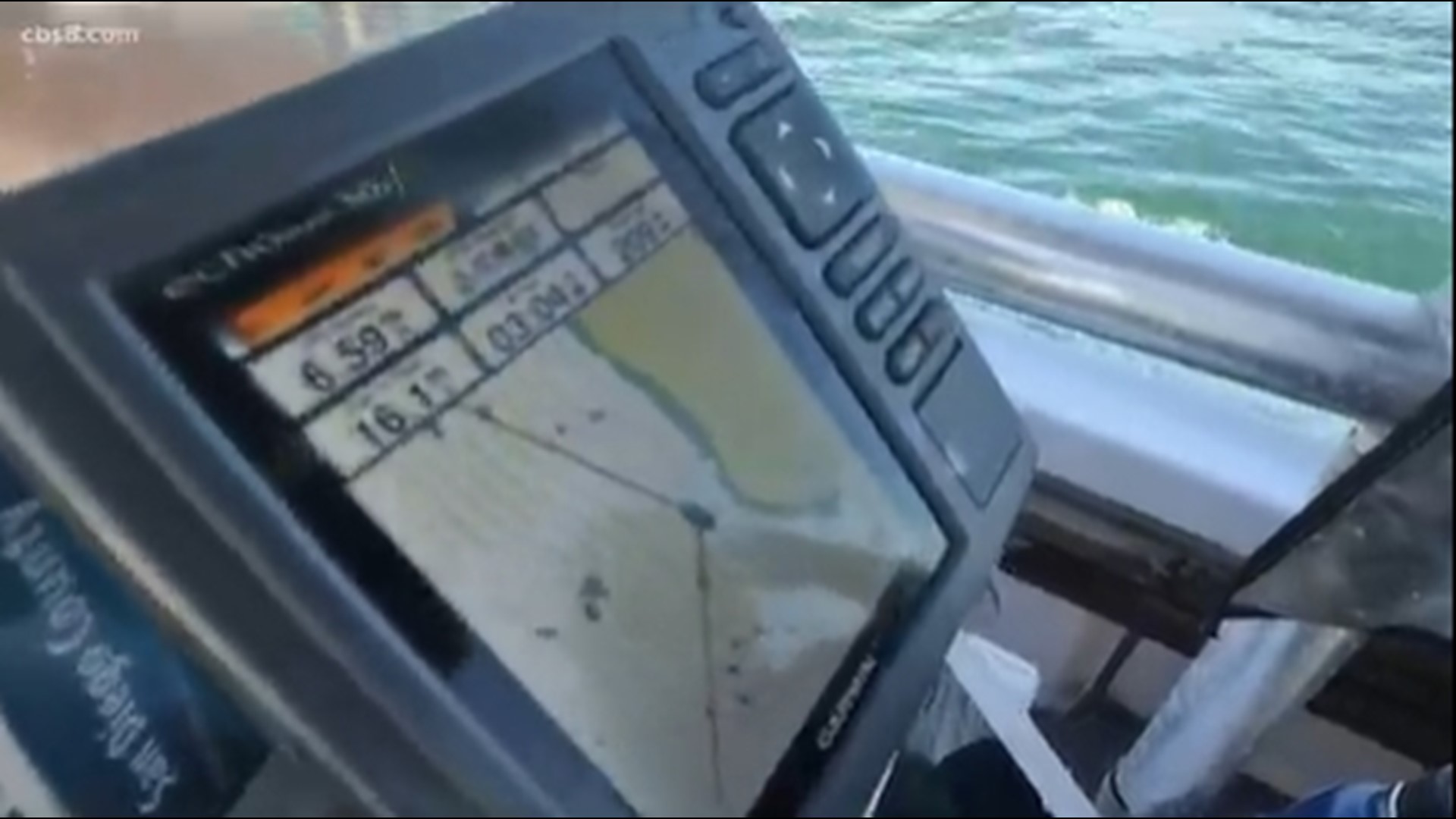SAN DIEGO COUNTY, Calif. — Illegal fishing is happening across the San Diego coastline on any given day but what many fishermen may not know is that now there are eyes watching and a bigger fine, making sure areas that should not be fished, don’t get destroyed.
A team from WILDCOAST has caught poachers in the act, so CBS 8 joined WILDCOAST for a ride-a-long on their boat to check for any illegal fishing.
As we headed out of Mission Bay past Mission Beach, Pacific Beach, Bird Rock, then La Jolla we notice there are plenty of other people enjoying a day on the water.
And that’s what WILDCOAST crewmembers hope to see.
They’re keeping an eye on the fisherman and so far, most fishing boats appear to be where they should be - outside the marine protected areas also known as MPA’s. MPA’s are places where the marine life should be left alone.
Angela Kemsley, the conservation manager at WILDCOAST says, “They’re like underwater state parks…so if you’ve been to Swami’s or Point Loma or La Jolla then you’ve been to a marine protected area.”
There are 11 MPA’s in San Diego and 124 across California.
Since these MPA’s are so important for the health of our oceans one of WILDCOAST’s many missions are to protect them.
Carlos Callado, the CA Conservation Coordinator points out, “Right there (on Scripps Pier) is our radar dish, so it’s constantly sending out signals to identify if there’s something on the water.”
It serves as the eyes for Callado. He logs in from anywhere and observes about a 3-radius, north and south of the Scripps Pier. He even gets alerts if a boat appears to be poaching.
Callado says, “What flags the system is time spent in the MPA and the speed they’re going, if they’re going 5 knots and within the boundaries for 15 min.”
Between the Scripps Pier to La Jolla Cove, it’s a no take zone, “Where you would not be able to go fishing, spear fishing, lobster trapping, no take of any kind.”
But still Callado has seen more than 60 poachers in South La Jolla alone in the couple years since the new radars went up.
There’s a second radar in San Diego, near Swami’s.
It was at Swami’s where WILDCOAST caught a party boat profiting off people who paid to go fishing. They may catch a lot of fish there, but they also caught a hefty fine of $5,000.
This was the first time a party boat got busted since WILDCOAST urged state leaders to increase the fines.
“A good majority of our fisherman are wonderful, and they follow all the rules, they fish sustainably but unfortunately there are a few bad actors the poachers who are stealing,” said Kemsley.
Kemsley says if a fisherman got busted, they would pay $100 to $1,000 in fines, but now what are classified as “commercial passenger fishing vessels” can be charged anywhere from $5,000 to $40,000.
Neda asks Callado, “Would you say it’s pretty tempting for fisherman to come out here?”
“The fish in the MPA’s are so much healthier and so much larger but that’s why they’re there in the MPA’s,” said Callado. “The fish need a place where they can grow and then fisherman will see the spillover effect.”
It’s important for fisherman to know where the MPA’s are which are clear on the map.
“There’s no clear sign, there’s no indicators on the water that this is an area we shouldn’t be fishing and that’s the issue we’re facing right now… if they know they often go right outside to enjoy the effects of a spillover.”
We saw that firsthand, just outside of the MPA we could see quite a few fishing boats with people on board casting their lines.
Fish like yellowtail, calico bass, sand bass, white sea bass, and lobsters are abundant among the kelp forests and the rocky reefs. But that wasn’t always the case.
“Marine protected areas are extremely biodiverse and harbor many species and habitats, that means if undisturbed they create healthy oceans all around them,” said Callado.
And it’s because of people like Callado, Kemsley, and our Captain Joe that these diverse habitats are thriving.
“I’ve always loved the ocean and it is my pleasure to be out there to be able to protect it,” explained Callado.
San Diego has two radars as part of the pilot program and since it’s going well WILDCOAST will get a third radar soon. The main goal of WILDCOAST is education.
They’ll alert CA Department of Fish and Wildlife or lifeguards if they do see any illegal activity, they do not have the authority to cite or fine people.
WATCH RELATED: Inside Look | 'Nat Geo Live: Ocean Soul' (March 2022)

